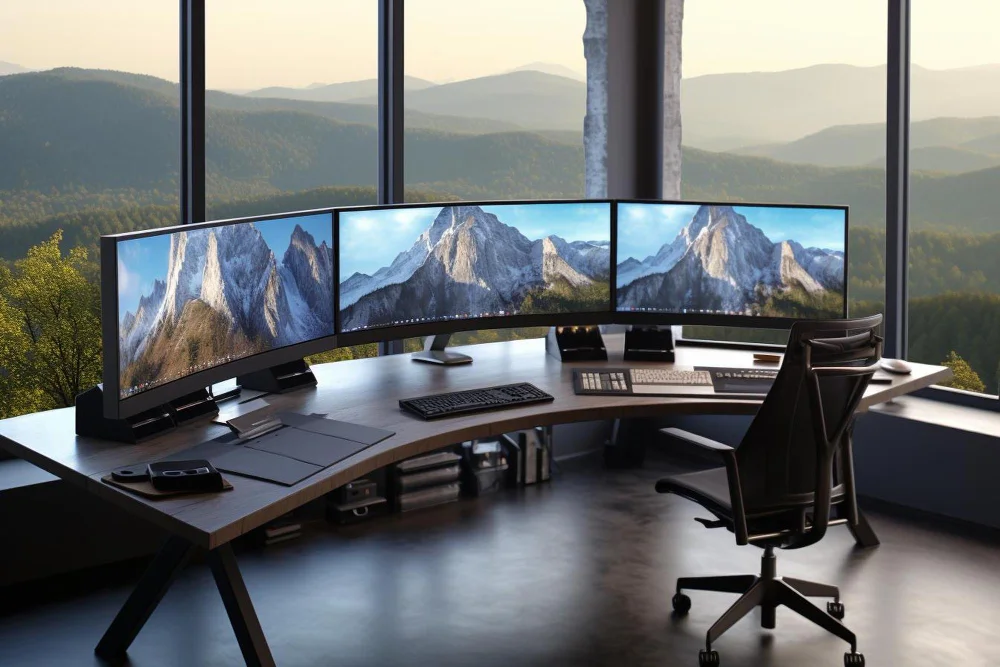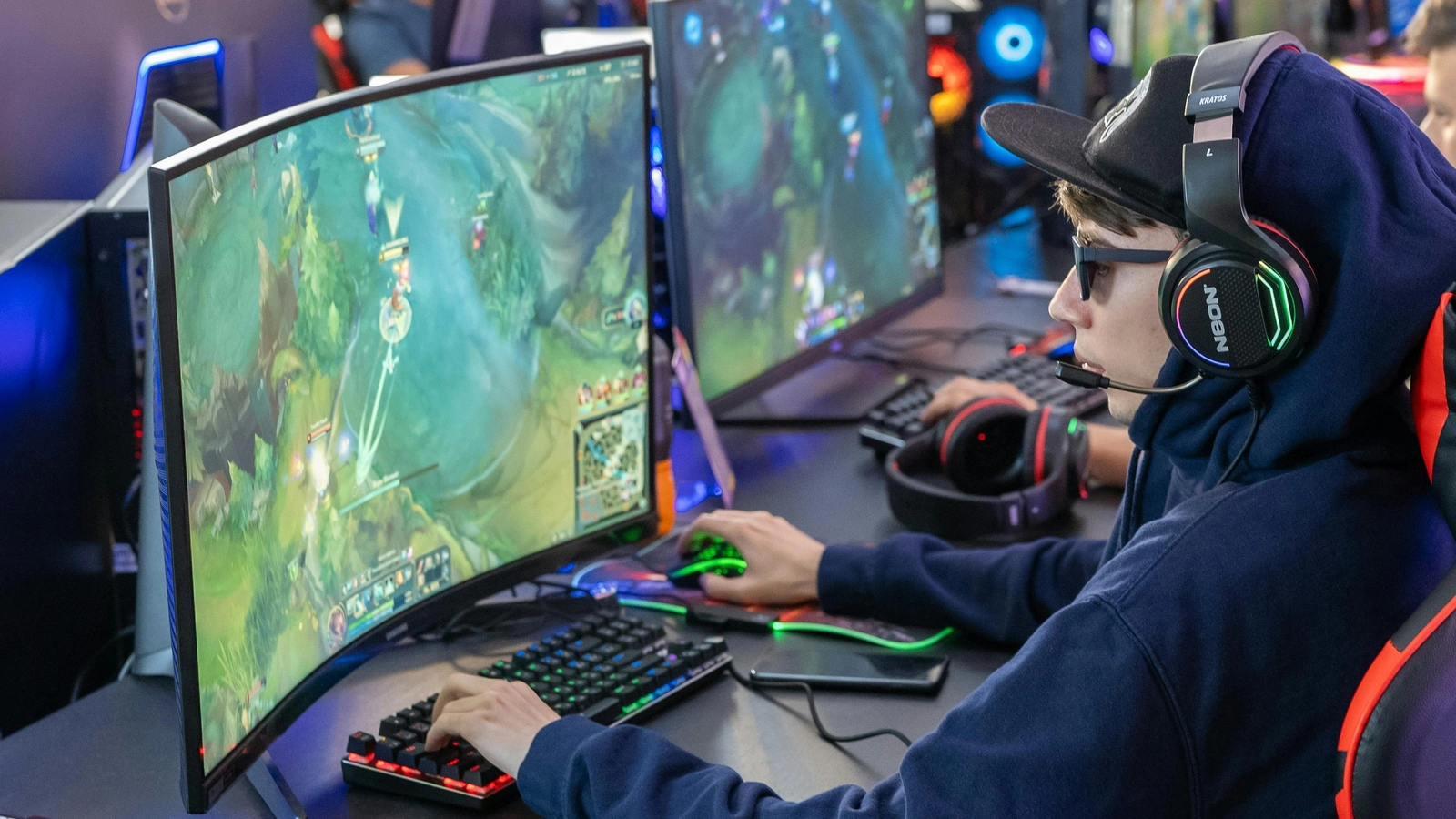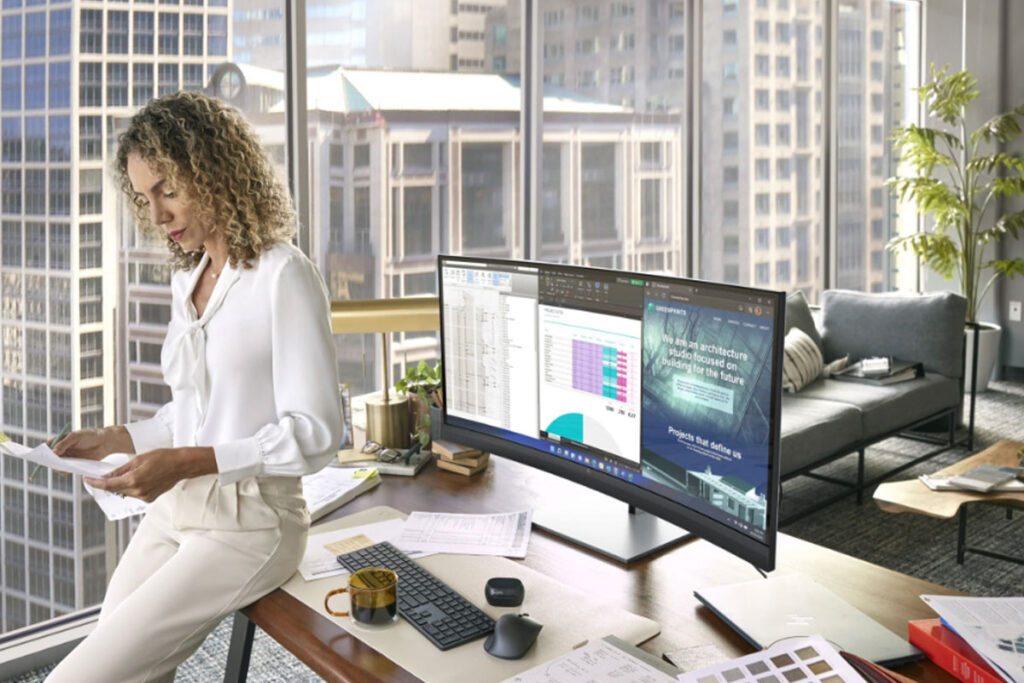As we dive into 2024, the demand for high-quality monitors has surged, catering to both gamers and professionals seeking enhanced productivity. With advancements in technology, today’s monitors offer stunning visuals, faster refresh rates, and a plethora of features that make them indispensable tools. This guide explores the best monitors of 2024, focusing on options for gaming and productivity.
Understanding Monitor Specifications

Before we dive into specific models, it’s essential to understand some key specifications that can influence your choice:
Resolution: This refers to the number of pixels on the screen. Common resolutions include:
Full HD (1920×1080): Standard for most users.
Quad HD (2560×1440): Offers more detail, great for gaming and design.
4K (3840×2160): Provides stunning clarity, ideal for professional work.
Refresh Rate: Measured in hertz (Hz), this indicates how many times the screen refreshes per second. A higher refresh rate (like 144Hz or 240Hz) is crucial for smooth gaming.
Response Time: Measured in milliseconds (ms), this indicates how quickly a pixel can change from one color to another. Lower response times (1ms to 5ms) are preferable for gaming.
Panel Type: Different panel technologies affect color accuracy and viewing angles:
IPS (In-Plane Switching): Best for color accuracy and viewing angles.
TN (Twisted Nematic): Offers faster response time
s, generally at the cost of color fidelity.
VA (Vertical Alignment): Provides better contrast ratios.
Adaptive Sync Technology: Technologies like NVIDIA G-Sync and AMD FreeSync reduce screen tearing and provide a smoother gaming experience.
Top Monitors for Gaming in 2024

1. ASUS ROG Swift PG32UQX
Resolution: 4K (3840×2160)
Refresh Rate: 144Hz
Panel Type: IPS
Key Features: G-Sync Ultimate, HDR support
The ASUS ROG Swift PG32UQX is a premium choice for gamers who demand the best. With its stunning 4K resolution and high refresh rate, this monitor delivers breathtaking visuals. The G-Sync Ultimate technology ensures a smooth gaming experience without tearing, while HDR support enhances contrast and color vibrancy.
2. Acer Predator X38
Resolution: 3840×1600
Refresh Rate: 144Hz (overclockable to 175Hz)
Panel Type: IPS
Key Features: G-Sync, curved design
The Acer Predator X38 offers a massive 38-inch curved display, immersing gamers in their favorite titles. Its ultra-wide aspect ratio and high resolution provide ample screen real estate for multitasking, making it perfect for both gaming and productivity.
3. Dell Alienware AW2521H
Resolution: 2560×1440
Refresh Rate: 360Hz
Panel Type: IPS
Key Features: G-Sync, customizable RGB lighting
For competitive gamers, the Dell Alienware AW2521H is a game-changer. With a staggering 360Hz refresh rate, it provides an ultra-smooth experience, crucial for fast-paced games. The customizable RGB lighting adds a personal touch, making it a standout in any gaming setup.
Top Monitors for Productivity in 2024

1. LG UltraFine 5K (27MD5KL-B)
Resolution: 5120×2880
Panel Type: IPS
Key Features: Thunderbolt 3, P3 color gamut
The LG UltraFine 5K monitor is perfect for creatives and professionals who require exceptional detail. With its 5K resolution, this monitor provides crystal-clear images, making it ideal for graphic design and video editing. The Thunderbolt 3 connectivity ensures fast data transfer and charging for compatible devices.
2. BenQ PD3220U
Resolution: 4K (3840×2160)
Panel Type: IPS
Key Features: HDR10, 95% P3 color coverage
The BenQ PD3220U is designed for designers and engineers who need accurate color representation. With HDR10 support and a wide color gamut, it’s perfect for creative tasks. The monitor also includes a KVM switch, allowing users to control multiple devices with a single keyboard and mouse.
3. Samsung Odyssey Neo G9
Resolution: 5120×1440
Panel Type: VA
Key Features: Mini LED, Quantum HDR 2000
Though primarily aimed at gamers, the Samsung Odyssey Neo G9 also excels in productivity. Its ultra-wide, curved display provides ample screen real estate for multitasking, and the Mini LED technology ensures vibrant colors and deep blacks, making it a great choice for content creators.
Budget-Friendly Options
If you’re looking for great performance without breaking the bank, consider these budget-friendly monitors:
1. Acer R240HY
Resolution: Full HD (1920×1080)
Panel Type: IPS
Key Features: Slim bezels, great color accuracy
The Acer R240HY is an excellent choice for everyday tasks and casual gaming. Its IPS panel provides good color accuracy and wide viewing angles, making it suitable for both work and entertainment.
2. ViewSonic VA2456-MHD
Resolution: Full HD (1920×1080)
Panel Type: IPS
Key Features: Flicker-free technology, low blue light
This monitor is a solid choice for office use and casual media consumption. The flicker-free technology and low blue light feature help reduce eye strain during long hours of use.
Conclusion
Choosing the right monitor in 2024 depends on your specific needs, whether you’re a gamer seeking high refresh rates and response times or a professional requiring exceptional color accuracy and resolution. The options listed here represent some of the best available, balancing performance, features, and value.
Investing in a quality monitor can significantly enhance your gaming experience and productivity, making it a worthwhile consideration for anyone looking to upgrade their setup. Whether you choose a high-end model or a budget-friendly option, make sure to select a monitor that fits your requirements and enhances your overall experience.
FAQs
1. What is the best resolution for gaming?
For gaming, a resolution of 1440p (2560×1440) is often considered the sweet spot, providing a balance between performance and visual quality. However, 4K (3840×2160) monitors are increasingly popular for their stunning detail, especially if your hardware can handle it.
2. How important is refresh rate for gaming?
Refresh rate is crucial for gaming. A higher refresh rate (like 144Hz or 240Hz) results in smoother gameplay, which is especially beneficial in fast-paced games. Lower refresh rates can lead to motion blur and choppy visuals.
3. What panel type is best for color accuracy?
IPS (In-Plane Switching) panels are known for their superior color accuracy and wider viewing angles compared to TN (Twisted Nematic) and VA (Vertical Alignment) panels. This makes them ideal for graphic design and photo editing.
4. Do I need G-Sync or FreeSync for gaming?
G-Sync (NVIDIA) and FreeSync (AMD) technologies help eliminate screen tearing and stuttering by synchronizing the monitor’s refresh rate with the graphics card’s frame rate. If you’re a serious gamer, having one of these technologies can enhance your experience.
5. Can I use a gaming monitor for productivity?
Absolutely! Many gaming monitors offer features like high resolution and fast refresh rates, making them suitable for productivity tasks. Look for models with good color accuracy if you’re doing graphic design or video editing.
What is the benefit of a curved monitor?
Curved monitors provide a more immersive experience by wrapping the display around your field of view. They can also reduce distortion at the edges of the screen, making them a popular choice for both gaming and multitasking.
How do I choose the right size monitor?
Monitor size depends on your workspace and viewing distance. Generally, a 27-inch monitor is ideal for most desks, while larger models (32 inches and above) work well for ultra-wide or multi-monitor setups. Ensure you can comfortably view the screen without straining.
Are budget monitors worth it?
Yes, budget monitors can be great for everyday tasks, casual gaming, and basic office work. While they may not offer the same performance as high-end models, many provide solid quality for their price. Look for IPS panels for better color accuracy even in lower-end options.
What features should I look for in a productivity monitor?
When choosing a monitor for productivity, look for:
High resolution (at least 1080p)
Good color accuracy (IPS panel)
Adjustable stand (height, tilt, swivel)
Connectivity options (HDMI, USB-C, DisplayPort)
Eye care features (flicker-free, low blue light)
How often should I upgrade my monitor?
Monitor technology evolves rapidly, but you should consider upgrading if your monitor no longer meets your needs, has outdated resolution or refresh rates, or shows signs of wear (like flickering or dead pixels). Upgrading every 3-5 years is a common guideline, depending on your usage.


